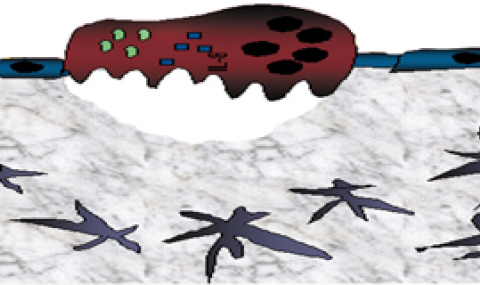Bone marrow (BM) recognition, homing and lodgment of long term repopulating hematopoietic stem cells (LT HSCs) are essential first steps for durable blood cell production during embryonic development and in clinical stem cell transplantation. Rare, BM retained LT HSCs endowed with the highest repopulation potential highly express EPCR (endothelial protein c receptor) and PAR1, which control LT HSC retention and chemotherapy resistance by limiting nitric oxide levels (Gur Cohen S et al, Nat Med 2015). Whether EPCR signaling is essential to navigate transplanted LT HSC back to the BM remains unknown. We report that transplanted EPCR+ LT HSCs preferentially home to the BM, in contrast to immature progenitors. Homed EPCR+ LT HSCs were retained adjacent to BM thrombomodulin+ (TM)-expressing arterioles. Interestingly, LT HSC also express TM and its lectin domain, mediating recognition between LT HSC and BM arterial endothelial glycocalyx. LT HSC pretreated in vitro with the EPCR major ligand, activated protein c (aPC), displayed a striking advantage in competitive BM homing and repopulation. Homing enhancement by aPC treatment reached a plateau, demonstrating limited available BM niches for transplanted LT HSC. EPCR+ LT HSCs homed with higher efficiency to the BM of non-conditioned hosts, while pretreating irradiated mice with the thrombin inhibitor hirudin, to reduce irradiation-mediated thrombin production and mobilization, significantly enhanced LT HSC homing. Intriguingly, EPCR+ LT HSCs can engraft the BM of non-irradiated recipients, while remaining quiescent, without giving rise to differentiated progeny. Strikingly, the quiescent homed EPCR+ LT HSCs were awakened by treating engrafted hosts with nitric oxide donor or with low dose chemotherapy, revealing that preconditioning and clearance of occupied HSC niches are not required. Herein we define EPCR and TM as guidance molecules, navigating LT HSC specifically to the BM, independently of niche clearance. The BM harbors limited numbers of available niches, and EPCR engagement with aPC dramatically augments LT HSC BM homing and repopulation. Our study provides mechanistic insights concerning LT HSC homing, which may lead to improved BM transplantation protocols and be applied to prevent chemotherapy resistance of EPCR-expressing cancer stem cell.

Dynamic Networking between Stem Cells & Bone Marrow Microenvironment


